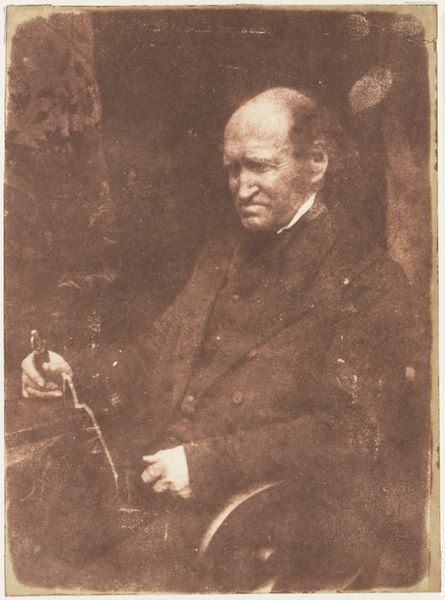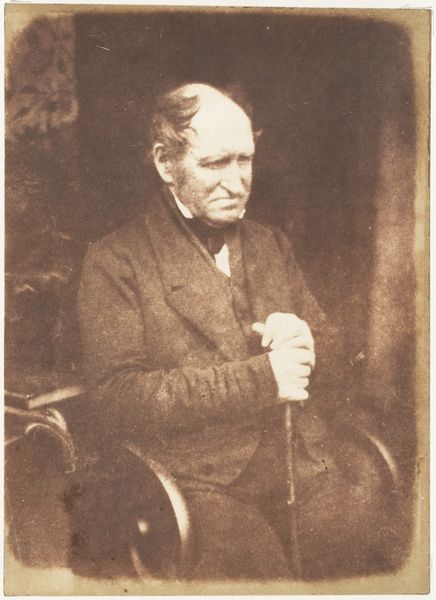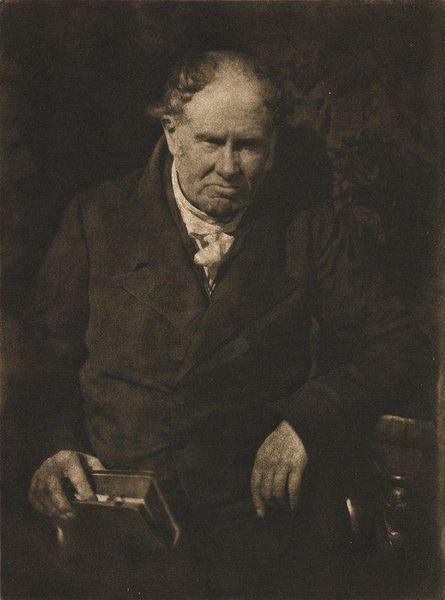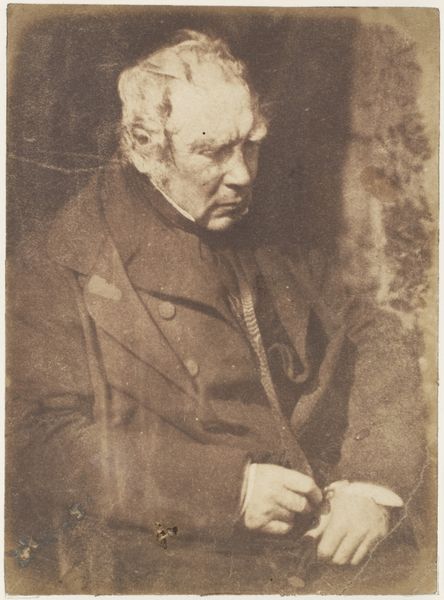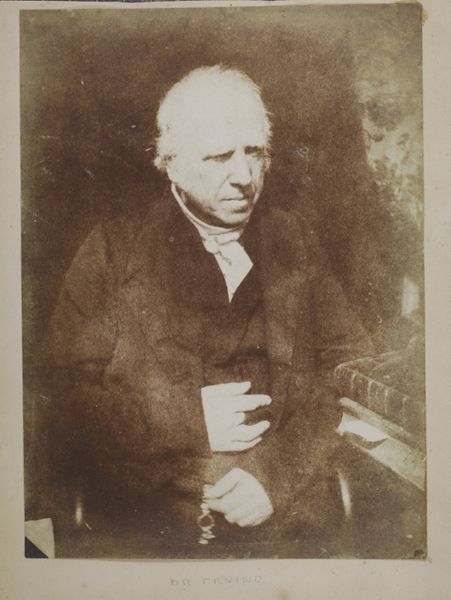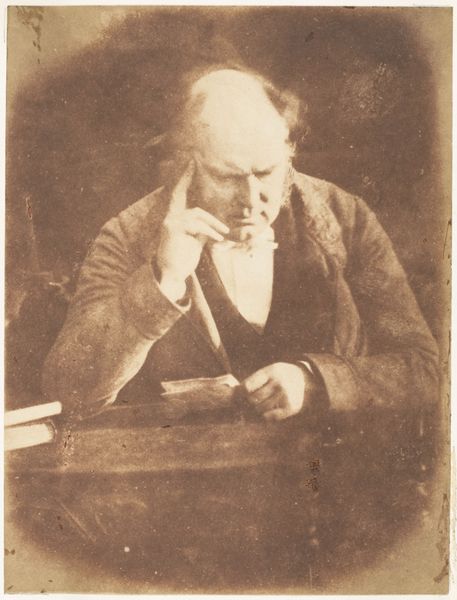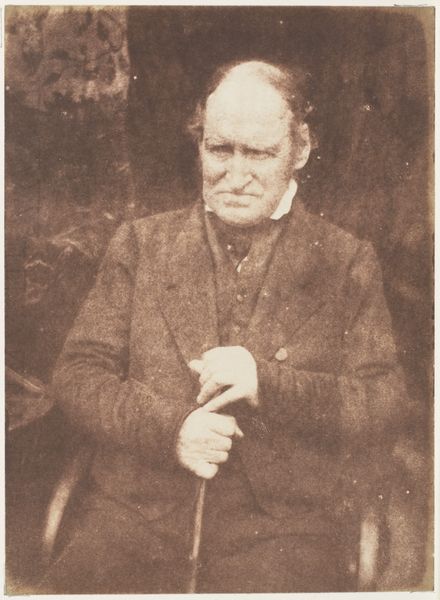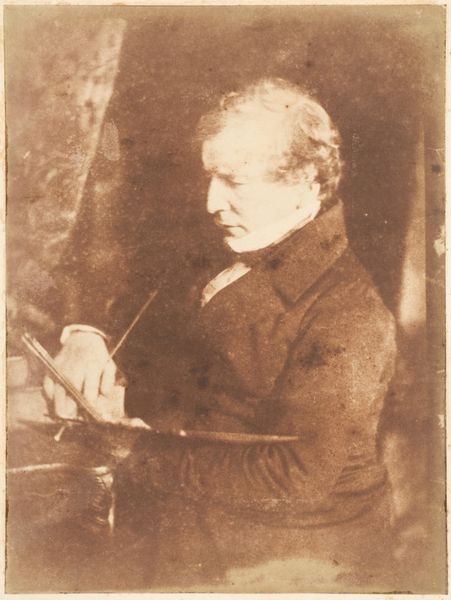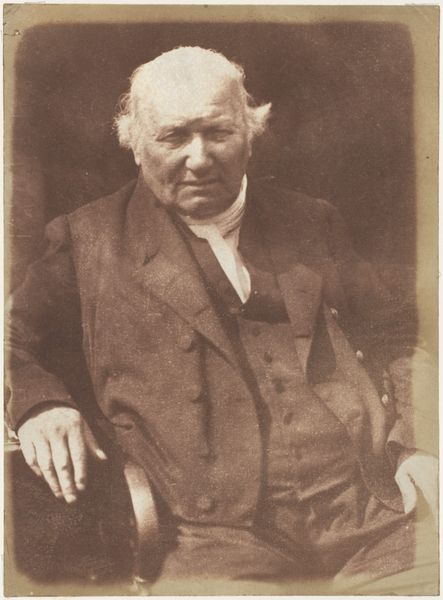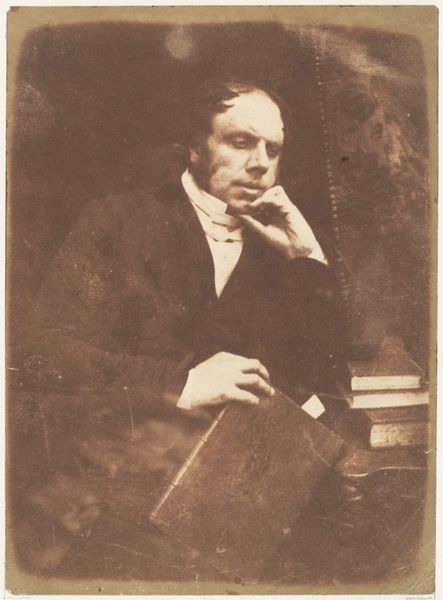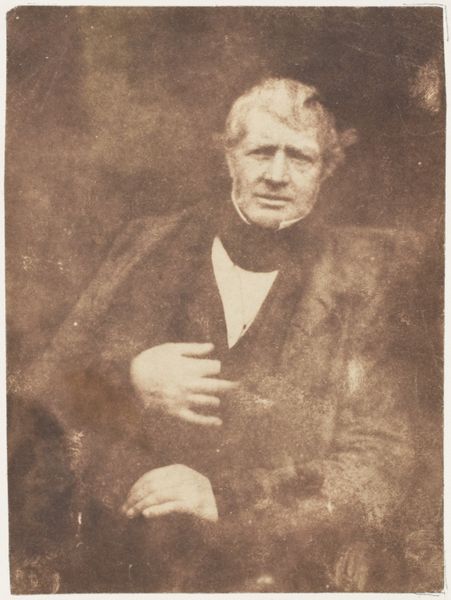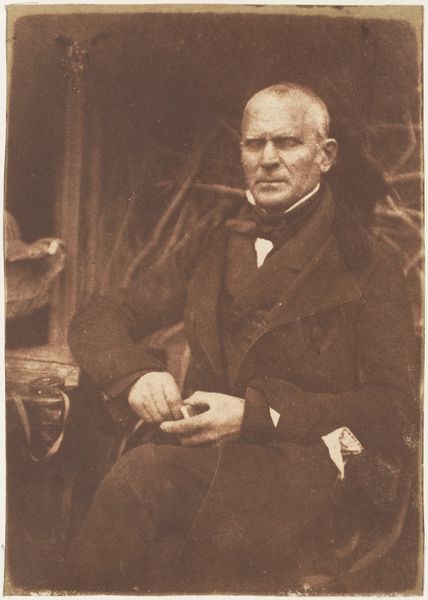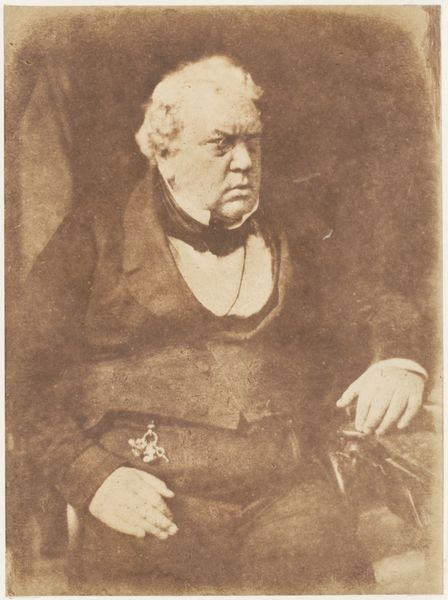
daguerreotype, photography
#
portrait
#
daguerreotype
#
photography
#
portrait reference
#
romanticism
#
realism
Copyright: Public Domain
Editor: This is "Dr. Monro," a daguerreotype created sometime between 1843 and 1847 by Hill and Adamson, currently housed at the Metropolitan Museum of Art. It's striking how direct the gaze is, almost confrontational, and I find myself wondering, what kind of man was Dr. Monro? Curator: Ah, a splendid question! The gaze does hold us, doesn’t it? It's not just a stare; it’s an invitation to consider the sitter's inner life, a hint of the turbulent Romantic era perhaps. Look at the soft, almost painterly quality of the image, defying the sharp precision we often associate with early photography. Do you sense any of the photographer's hand in shaping the portrayal beyond simply capturing a likeness? Editor: It feels… intimate, almost. The soft focus around the edges kind of isolates him, making the portrait feel very personal despite being, you know, a historical artifact. Curator: Precisely. Hill and Adamson weren't merely documenting; they were interpreting. Consider the period: photography was still nascent, a magical blend of science and art. Now, what do you make of the object in Dr. Monro's hand? Could that offer us a clue to his profession or perhaps his passions? Editor: It looks like a little box... maybe holding specimens or tools? The slightly obscured details of whatever he's holding definitely invite some mystery. Curator: Indeed! It invites speculation, doesn't it? A tangible piece of himself that the artists invite us to ponder. Editor: It’s like a riddle in sepia tones! Curator: And that’s the enchantment, isn't it? These early photographic portraits whisper stories instead of shouting them, leaving ample room for us to add our own chapters to the narrative. I always find that early photography often invites you into this otherworldliness, a timeless, haunted state. What a thought to ponder!
Comments
No comments
Be the first to comment and join the conversation on the ultimate creative platform.
